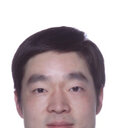Separation of the potential G-quadruplex ligands from the butanol extract of Zanthoxylum ailanthoides Sieb. & Zucc. by countercurrent chromatography and preparative high performance liquid chromatography.
Nøgleord
Abstrakt
G-quadruplex DNA structure is considered to be a very attractive target for antitumor drug design due to its unique role in maintaining telomerase activities. Therefore, discovering ligands with high stability of G-quadruplex structure is of great interest. In this paper, pH-zone refining counter current chromatography (CCC) and preparative high performance liquid chromatography (HPLC) were employed for the separation of potent G-quadruplex ligands from the n-butanol fraction of the crude extract of Zanthoxylum ailanthoides, which is a traditional Chinese medicine recently found to display high inhibitory activity against several human cancer cells. The 75% aqueous ethanol extract of the stem bark of Z. ailanthoides and its fractions with petroleum ether, ethyl acetate and n-butanol displayed almost the same G-quadruplex stabilization ability. Here, pH-zone refining CCC was used for the separation of the alkaloids from the n-butanol fraction by a seldom used solvent system composed of dichloromethane-methanol-water (4:1:2.5) with 10mM TEA in the organic stationary phase as retainer and 10mM HCl in the aqueous mobile phase as eluter. Compounds I, II and III were obtained, with purity greater than 95%, in the quantities of 31.2, 94.0, and 26.4mg respectively from 300mg of lipophilic fraction within 80min, which were identified as three tetrahydroprotoberberines isolated for the first time in this plant. In addition, a phenylpropanoid glycoside compound IV (Syringin), an isoquinoline (Magnoflorine, V), and two lignin isomers (+)-lyoniresiol-3α-O-β-d-glucopyranoside (VI) and (-)-lyoniresinol -3α-O-β-D -glucopyranoside (VII) were isolated by traditional CCC together with preparative HPLC. Compounds IV, V, VI and VII were obtained, with purity greater than 95%, in the quantities of 4.0, 13.2, 6.7, and 6.5mg respectively from 960mg of hydrophilic fraction. Among the seven isolated compounds, tetrahydroprotoberberine I, II and III were found to display remarkable stabilization effects on G-quadruplex by increasing G-quadruplex's Tm approximately 10°C, which may be the most potent G-quadruplex ligands in Z. ailanthoides.



